Launch event: Phos4You
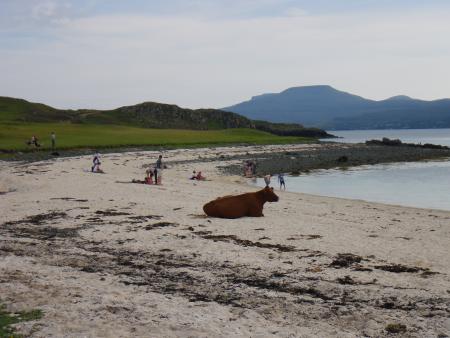
This event, part of the EU Phos4You research project, seeks to engage with stakeholders at an early stage to inform and direct the work of the Scottish research team so we can address concerns and capitalise on opportunities. The event will be of interest to those working in the area of phosphorous removal and recoery from waste water. For more information and registration details, please see the event flyer.
CREW featured in Parliament Hydro Nation debate
The debate covered the importance of water to Scotland’s national and international identity, and developing the water economy, as promoted by the Hydro Nation agenda. Roseanna Cunningham, Cabinet Secretary Environment, Climate Change and Land Reform said in her speech:
“Sitting alongside the industry, our academic and research sector is delivering ground breaking research, including through CREW—Scotland’s centre of expertise for waters—and our innovative and challenging postgraduate hydro nation scholars programme. Funded by the Scottish Government and hosted by the James Hutton Institute, CREW provides a vital knowledge hub where calls for research are co-ordinated across academic institutions, Government and the water sector, which helps to improve the understanding of water in the environment, industry, pollution, resource management and technology. The scholars programme is designed to deliver the water leaders of the future, with a cohort of 19 talented PhD scholars studying a wide range of topics that have been identified as key to moving forward understanding and enhancing Scotland’s reputation as a centre for academic excellence. The programme delivered its first alumnus this summer.”
One week to go! Working with Natural Processes: The Evidence Behind Natural Flood Management, 31 October
The UK has experienced repeated severe flooding in recent years, which has raised the profile of Natural Flood Management (NFM) creating a prominent discussion of the benefits of working more closely with natural processes to help reduce flood risk and complement more traditional engineering responses, aiming to manage and reduce flood risk in a more efficient, cost-effective and sustainable way.
This conference will launch the Environment Agency’s ‘Working with Natural Processes Evidence Base’ which has been developed to help flood and coastal erosion risk management (FCERM) authorities understand, justify, develop and implement FCERM schemes with WWNP to reduce flood risk. It will also include presentations from a range of existing projects that have successfully implemented NFM measures on the ground, through effective partnerships, whilst drawing on a range of funding streams.
For more details and booking please see the event website.
Institute of Water Scottish Area Autumn Seminar - Back to the Future 2
This year’s theme is Back to the Future 2, we will look briefly back at how things have changed over the last 25 years in the Water Industry before looking ahead and working on some of the challenges that we might face over the next 25 years. This will be done under various sub-headings relevant to the Industry and what is most likely to present the biggest challenges as we look ahead.
For more information and booking please see the event webpage.
AWS Global Water Stewardship Forum 2017 - Edinburgh, 31 Oct-1 Nov
The Alliance for Water Stewardship, with Scottish Government support, will host the Global Water Stewardship Forum in Edinburgh (31 Oct - 1 Nov 2017). This event provides a platform for knowledge sharing on water stewardship by practitioners, stakeholders, and those new to the field. Details can be found on the AWS event website.
Developing a foundation for reclaimed water use in Scotland
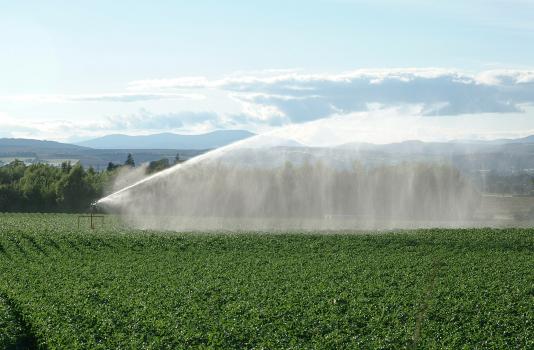
Water resources in Scotland and across the EU are under increasing stress, especially in areas with intense agriculture. Global climate changes are likely to exacerbate water shortages and cause an increasingly unpredictable supply. Consequently, there is an increasing interest in wastewater reclamation.
This project establishes the potential for marketing reclaimed water in Scotland, including the water quality requirements for business activities that could benefit from this, the potential water savings and benefits, and the stakeholder perspectives on the use of reclaimed water. The focus is on the intentional reuse of treated final effluents from municipal/urban wastewater treatment plants.
The research has been undertaken in two stages:
- Supporting the development of national guidelines in Scotland with a review of existing guidelines in other countries, and by using risk assessment tools to help develop reclaimed water standards that will ensure public health;
- Engaging with stakeholders to evaluate the models developed in Stage 1 and to identify benefits, savings, risks and barriers to use of reclaimed water in Scotland.
A series of potential end-use scenarios for reclaimed water relevant to Scotland have been developed, including urban irrigation (edible and non-edible), agricultural irrigation, non-potable domestic and industrial. For each scenario, exposure and risk assessment models have been developed to assess potential human health impacts.
Assessing the effectiveness of Scotland’s public flood warning service
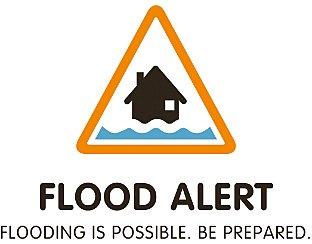
Flood Warnings and Flood Alerts have been offered in Scotland since the 1980s and have become a key element of delivering flood resilience as a response to the threats presented by climate change. High levels of demand have been translated into high levels of customer satisfaction as the delivery of services has spread and have embraced new technologies to better meet the needs of users. The direct messaging service of Floodline was initiated in 2011 and currently has around 25,000 registered
customers. This study was commissioned by SEPA to take stock of the progress which has been achieved.
This research explores the effectiveness of the Floodline service in Scotland by examining the experiences and opinions of users in their own individual contexts – social, flooding history, and geographical.
Evaluating the impact of the Scottish Government funded Community Resilience Development Officer Post
The aim of this study was to evaluate the Scottish Government funded Community Resilience Development Officer post at Education Scotland. The evaluation took place to inform the Scottish Government in terms of planning, and funding for, future posts of this kind. The purpose of the post is to help embed resilience thinking and online resources within the Curriculum for Excellence, i.e.to ensure resilience thinking reaches schools and children. This includes teaching on: the causes of extreme weather; its impact on communities (specifically flooding); and the ways in which individuals and communities can adapt to and mitigate the impact of related emergencies.
The study used qualitative and quantitative empirical data to evaluate both process and impact on adult stakeholders including local authority staff in resilience and education roles. This included interviews in four case study local authorities. The areas were selected to represent variety across Scotland with potentially different resilient issues e.g. urban, rural, coastal, island; but also to examine local authorities which were judged to have different degrees of engagement with the post.
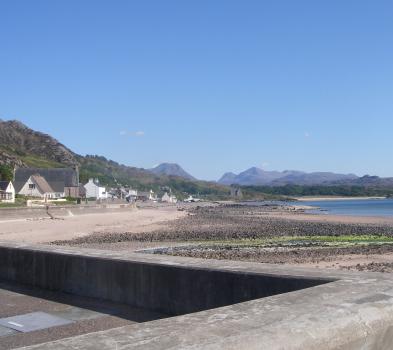
The Coastal Change Assessment creates a shared evidence base to support more sustainable coastal and terrestrial planning decisions in the light of a changing climate. For the first time, all 21000 km of the Scottish shoreline have been analysed to a level of detail never achieved before.
The assessment has established historic coastal change by extracting the georectified coastline position from OS 2nd Edition Country Series maps (1892-1905) and compared it to both the 1970’s and current coastal position (updated by LiDAR datasets where available) to estimate past erosion/accretion rates. Using the historic coastal change rates the coastline position is projected into the future. Using the erosion rates combined with a number of socioeconomic datasets, key assets at risk from future coastal erosion have been identified.
 CRW2014_02 Main report
CRW2014_02 Main report CRW2014_02 National Overview
CRW2014_02 National Overview CRW2014_02 Summary
CRW2014_02 Summary CRW2014_02 Recommendations
CRW2014_02 Recommendations CRW2014_02 Coastal Erosion Policy Context
CRW2014_02 Coastal Erosion Policy Context CRW2014_02 Methodology
CRW2014_02 Methodology CRW2014_02 Vulnerability Assessment
CRW2014_02 Vulnerability Assessment CRW2014_02 Cell 1 - St Abb's Head to Fife Ness
CRW2014_02 Cell 1 - St Abb's Head to Fife Ness CRW2014_02 Cell 2 - Fife Ness to Cairnbulg Point
CRW2014_02 Cell 2 - Fife Ness to Cairnbulg Point CRW2014_02 Cell 3 - Cairnbulg Point to Duncansby Head
CRW2014_02 Cell 3 - Cairnbulg Point to Duncansby Head CRW2014_02 Cell 4 - Duncansby Head to Cape Wrath
CRW2014_02 Cell 4 - Duncansby Head to Cape Wrath CRW2014_02 Cell 5 - Cape Wrath to the Mull of Kintyre
CRW2014_02 Cell 5 - Cape Wrath to the Mull of Kintyre CRW2014_02 Cell 6 - Mull of Kintyre to the Mull of Galloway
CRW2014_02 Cell 6 - Mull of Kintyre to the Mull of Galloway CRW2014_02 Cell 7 - Mull of Galloway to the Inner Solway Firth
CRW2014_02 Cell 7 - Mull of Galloway to the Inner Solway Firth CRW2014_02 Cells 8 and 9 - The Western Isles
CRW2014_02 Cells 8 and 9 - The Western Isles CRW2014_02 Cell 10 - Orkney
CRW2014_02 Cell 10 - Orkney CRW2014_02 Cell 11 - Shetland
CRW2014_02 Cell 11 - Shetland
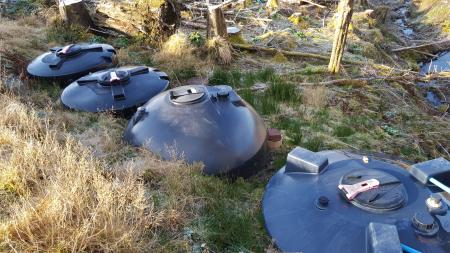
DWQR regulates Scottish Water and supervises the regulation of private water supplies (PWS) by local authorities. It is the latter supplies which create many of the policy challenges we currently face. Questions such as “How can we persuade people of the health risk their private supply presents?” and “How can we provide individuals and communities with the tools they need to effectively manage their private supply in a way that is both sustainable and resilient?” are just two examples and ones where CREW projects have been instrumental in furthering our understanding.
Some issues, such as the problem of lead plumbing in buildings and the effect of climate change on water catchments and source water quality are common to both public and PWS, and have been the subject of CREW work. Areas such as improving the PWS risk assessment process and supporting both local authorities and individual supply owners and users with authoritative advice are currently keeping us busy.
New regulations governing public and private water supplies are to come into force in October this year, in response to amendments to the EU Drinking Water Directive. Main changes on the private water supply side, affecting larger and commercial (formerly Type A) PWS, include the enhancement of enforcement powers for both local authorities and DWQR and the introduction of a standardised approved risk assessment process that must be completed before a new supply can be used. Changes in the Directive to the way in which parameters may be excluded from sampling by risk assessment potentially meant a significant increase in the amount of PWS sampling that would have been required. To avoid placing a significant burden on owners of PWS, the concept of rationalising sampling by grouping supplies into “water supply zones” has been introduced.




